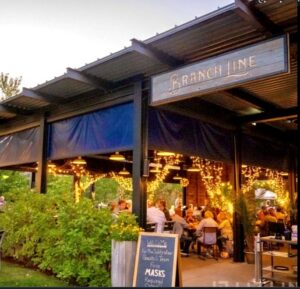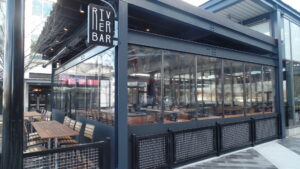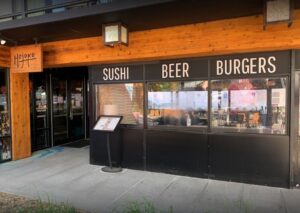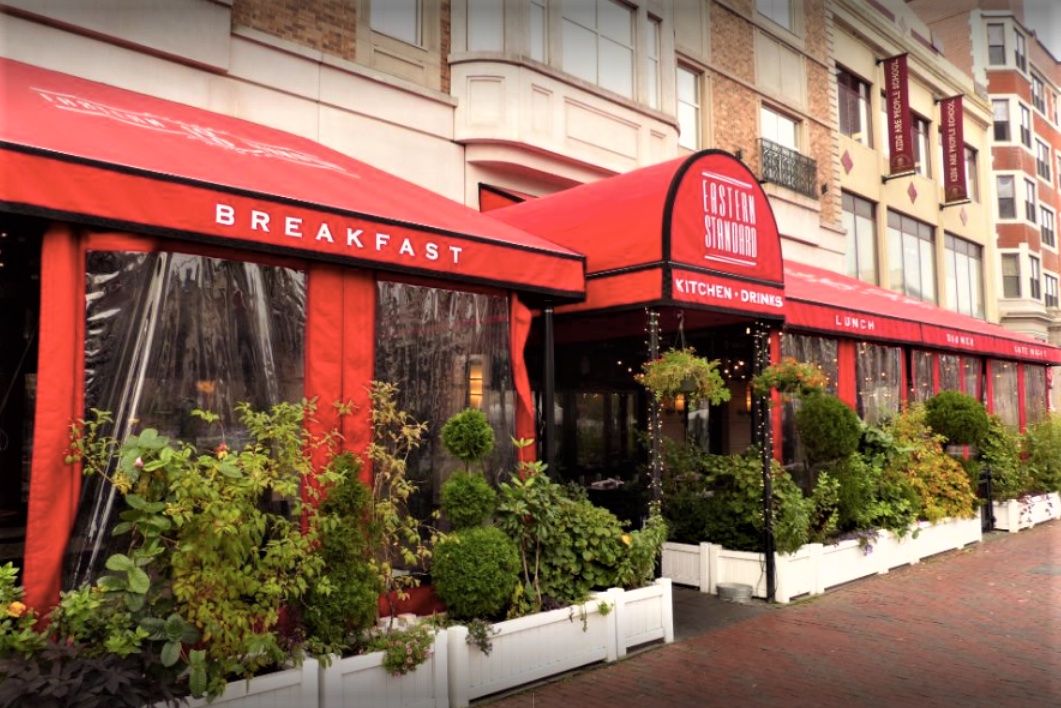Protect Diners, Grow Profits with Enclosures
Architectural Signage, Awnings and Canopies, Customer Spotlight, Design/Build, EnclosuresThe restaurant industry has always operated on a shoestring budget. When COVID-19 arrived in early 2020, restaurant owners and operators had to stretch budgets even further. The pandemic—and its necessary social distancing—required owners to rethink how to serve their customers, keep staff and patrons safe, and generate profit.
The past 17 months haven’t been easy. With severely diminished profits—restaurants have struggled to pay their bills. According to a new survey from the Alignable Research center, nearly 40% of restaurants couldn’t pay June’s rent this year. While a slight improvement over the 49% of restaurants struggling to make rent in May, the picture remains stark for this industry in recovery.
In June 2021, Congress sent an amendment to the floor that includes an additional $60 billion in aid under the Restaurant Revitalization Fund (RRF) Replenishment Act. Supporters are hopeful it will become law—and provide restaurants with a much-needed financial boost.
Last year forced many restaurant owners to get creative with profit generation. One savvy option? Expanding to add outdoor dining.
A Solution for Struggling Restaurants
Enclosures became a popular solution during the pandemic, but many restaurants have seen their benefit even before COVID-19 arrived. Enclosures offer competitive advantages enabling restaurants to:
- Increase revenue up to 30% by extending the dining season into the cooler months and launch their spring outdoor seasons earlier
- Take advantage of the flexibility to change seating configurations based on need
- Host larger gatherings
- Provide a safer, more COVID-proof option to dine on-site without needing to eat indoors
- Capitalize on the number of people who’d like outdoor dining as a post-pandemic option
According to Forbes, 62% of fine dining and 56% of casual dining restaurants allocated resources to expand or add outdoor seating since the beginning of the pandemic. In fact, in NYC, the outdoor model was so successful that the city made its Open Restaurants program permanent.
While revenues have decreased significantly since March 2020, Simons Advisory Group has found that restaurants increasing their footprint with outdoor seating see an average of 30% additional revenue—a significant boon as restaurants work to recover profits lost during the pandemic.
Not only does this option work now, but spaces protected with enclosures will help restaurants maintain expanded footprints once the pandemic ends. More permanent structures with heating and cooling systems will also allow restaurants to serve customers outside well into the fall and open up alfresco dining earlier in the spring.
Finding space for outdoor dining—via a courtyard, patio, rooftop, sidewalk, or even parking lot—may present a challenge but this additional space facilitates layouts that support social distancing. Some of these spaces may also accommodate larger groups more easily than a restaurant’s interior, especially for bigger parties that wish to dine together.
A variety of enclosures are currently on the market, including fixed structures built over patios and lightweight, retractable enclosures that allow restaurants to keep spaces open or close them to depending on the weather.
Enclosure Types
Roll-up vinyl seasonal shade covers offer a simple, retractable, lightweight option. A rope and pulley mechanism controls the vinyl screens that are usually mounted on a standard overhanging roof.
Smaller restaurants and pubs might lack the budget to afford a more permanent structure. But rope-and-pulley vinyl enclosures offer an economical, quick way to expand outdoor space. Clear vinyl enclosures protect diners from the weather and keep areas warmer on cooler days.

Slightly more substantial, permanent choices—which can include a fixed roof or have retractable roofs or walls—also extend a restaurant’s space and enable year-round dining. Well-designed permanent enclosures often use thermally broken aluminum frameworks which enabler restaurants to heat or cool the spaces just like a regular building. These structures can include windows and screens for additional ventilation.
Steel, another material option, also works for structural framing; however, it’s heavier than aluminum and requires additional maintenance, like painting and touch-ups. Because of its weight, steel may not be the best option for restaurants adding rooftop structures or for buildings considered heritage structures.
Wood structures evoke a warm, inviting feel—but like steel, they require regular maintenance and care to protect against weathering and damage, like discoloring or fading, from sun exposure.
Outdoor Dining: Becoming the Norm, Not the Exception
In 2020, 550 Boston restaurants participated in its outdoor dining program. The city decided to extend the program this year as well, and 556 restaurants received special permits to offer outdoor dining through November 2021. While many restaurants simply took over parking spaces, sidewalks, public seating areas, over 350 restaurants opted to put patios right on the road, in North and South End, Fenway, Back Bay, Mattapan, and Hyde Park.
Some have suggested continuing the tradition of outdoor dining not just in the warmer months, but in winter, too. The pandemic might be winding down, but an OpenTable survey concluded that deck, garden, patio, and sidewalk dining will remain popular long after COVID-19 is a memory. In fact, according to a 2021 poll conducted by restaurant.org, more than 80% of customers hoped restaurants would continue outdoor spaces kept for the long-term. Restaurants opting to keep outdoor dining long-term could see a 10 – 20% boost in average daily sales—pretty serious money!
Metro’s Closing In!
The enclosures Metro designs and installs are meant to provide temporary shelter from the elements that allows restaurants to extend the outdoor dining season.
Metro works primarily with fabrics and vinyl — but we’re flexible and able to work with other materials as well. At times, we partner with construction companies hired to add a permanent overhead roof structure. We come in and add the curtains and doors to finish the space. We’ve also installed motorized screens to make it easier to close off areas for companies including Deerfield Academy, AC Marriott Hotel in Portsmouth, and Boston’s Hojoko Restaurant.
Restaurant owners still thinking about whether to invest might take advantage and capitalize on the outdoor dining craze, which hasn’t shown any sign of abating. Whether they take the plunge and make a larger investment on a permanent, all-season structure or opt for a more economical shelter, it’s not too late to start or expand an outdoor dining area.

